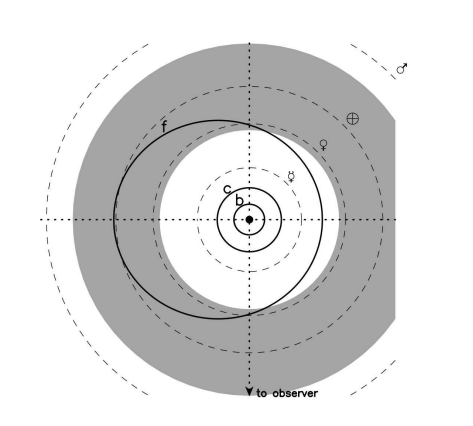More news I’ve been sitting on for a while but that’s still incredible is the story of the habitable – by all indication anyway – exo-Earth orbiting a binary star system well over 40 light years away. As noted at Technology Review, it’s not that astronomers are having a difficult time finding habitable exo-Earths: there are definitely plenty out there and we’re finding more and more thanks to the launch of the Kepler probe and its finely tuned eyes.
In fact, so many new candidates have appeared that a lot of people have already moved on to the next thing in the news cycle, completely forgetting that we’re on the brink of discovering planets that aren’t just potentially habitable to life like ours, but that may also have their own forms of life already on them.
In this case, 55 Cancri f, shown above, is in the constellation Cancer and shows signs of being quite comfortable to human life even though it orbits a binary star system. When I was a wee astrophysicist as an undergrad, I learned that binary star systems are entirely more common than you might think (after all, we do tend to make the assumption that our own star system is the norm.)
Here’s what Technology Review had to say:
Today, we can add another strange planet to the list: 55 Cancri f, one of five planets known to orbit an orange dwarf star some 40 light years away in the constellation of Cancer.
Kaspar von Braun at the California Institute of Technology in Pasadena and a few pals have measured its orbit accurately for the first time. These guys are able to confirm that 55 Cancri f is a genuine candidate to support liquid water.
They say that although this planet’s orbit is much more elliptical than Earth’s, it still spends most of its time (74 per cent) in the habitable zone.
Furthermore, 55 Cancri f is quite like Earth in some ways. Its year is about the same length as ours. And with moderate greenhouse warming, it could support liquid water all year round.
But unlike Earth, its mass is about the same as Neptune’s (although it doesn’t seem to have a large gaseous atmosphere).
That’s incredible: a Neptune-sized planet that could be completely habitable and has two suns? Incredible.
[ Technology Review :: Astronomers Discover Habitable ExoEarth Orbiting Binary Star ]


OK, that’s amazing! Why hadn’t I heard about this before you posted it here‽
Pingback: TechTV Forever // » Blog Archive » This Week at Gears and Widgets…